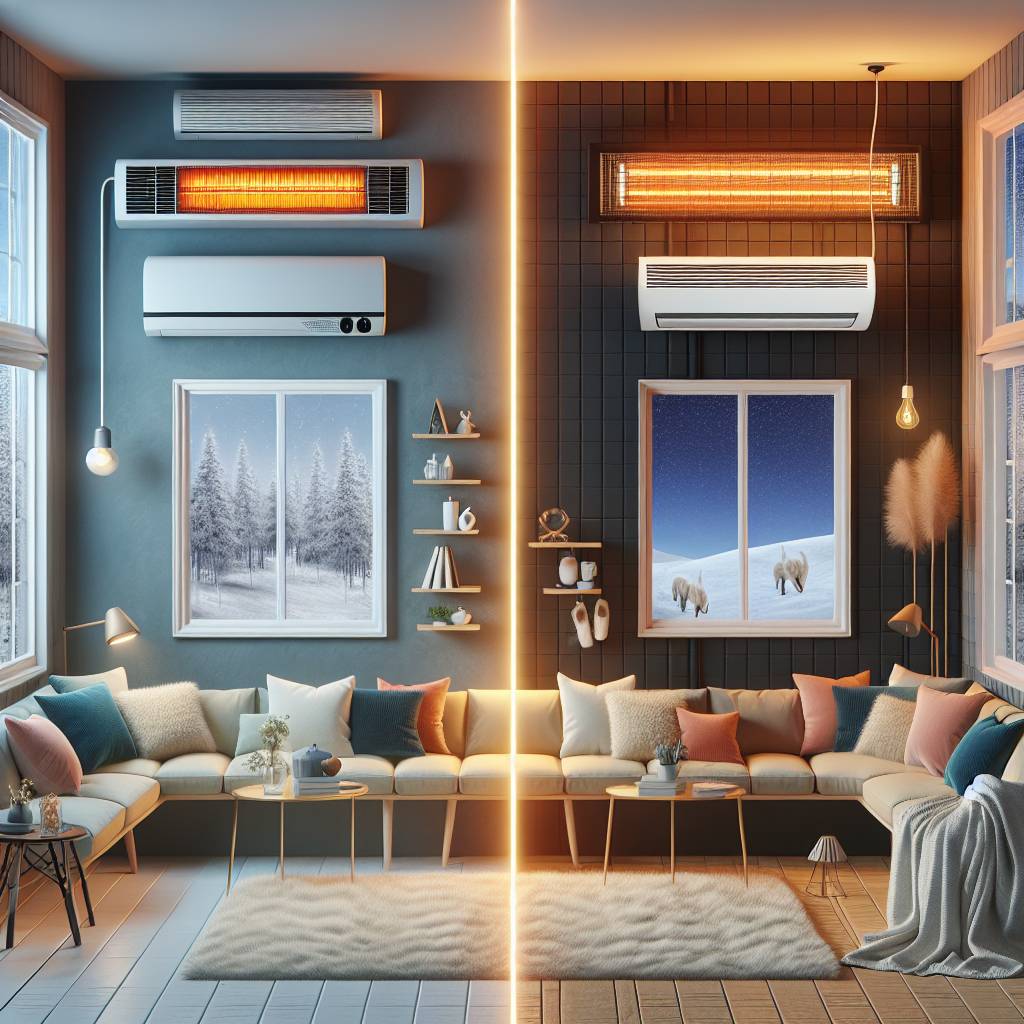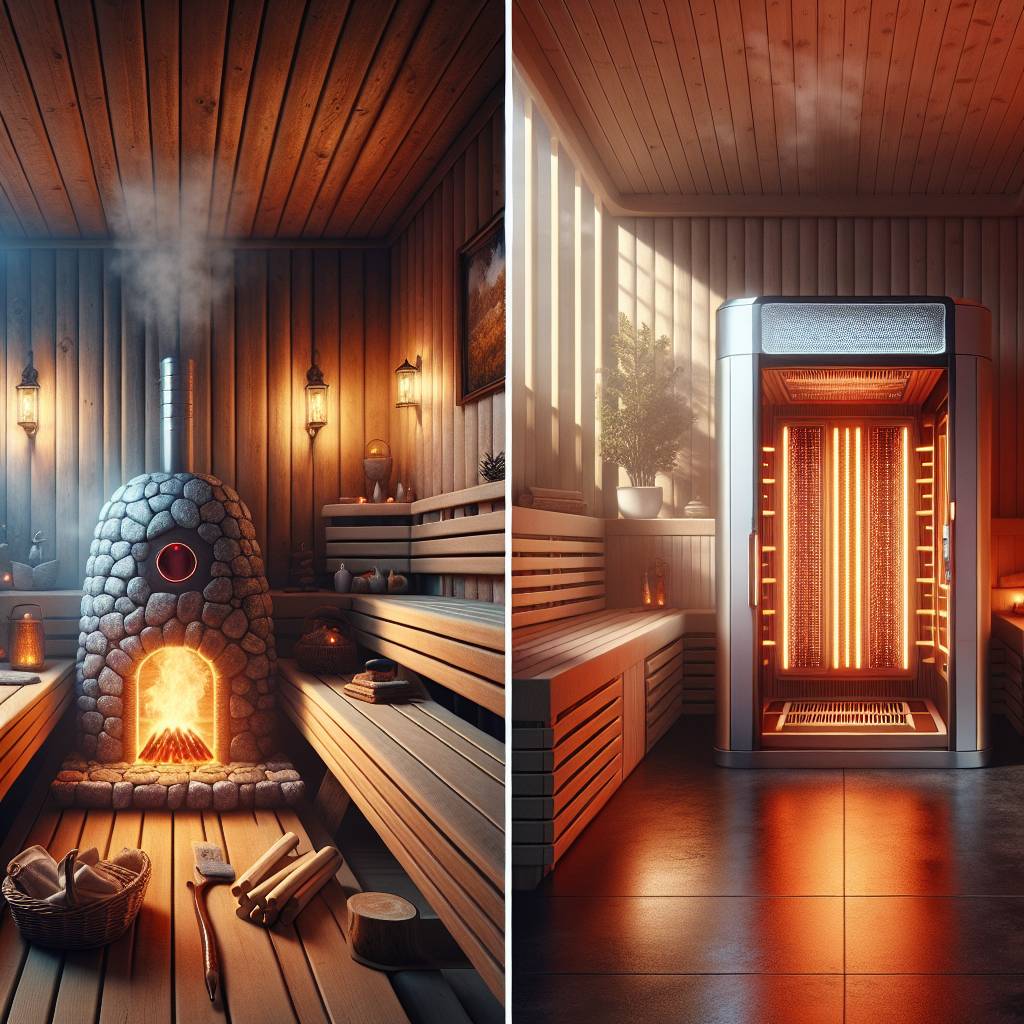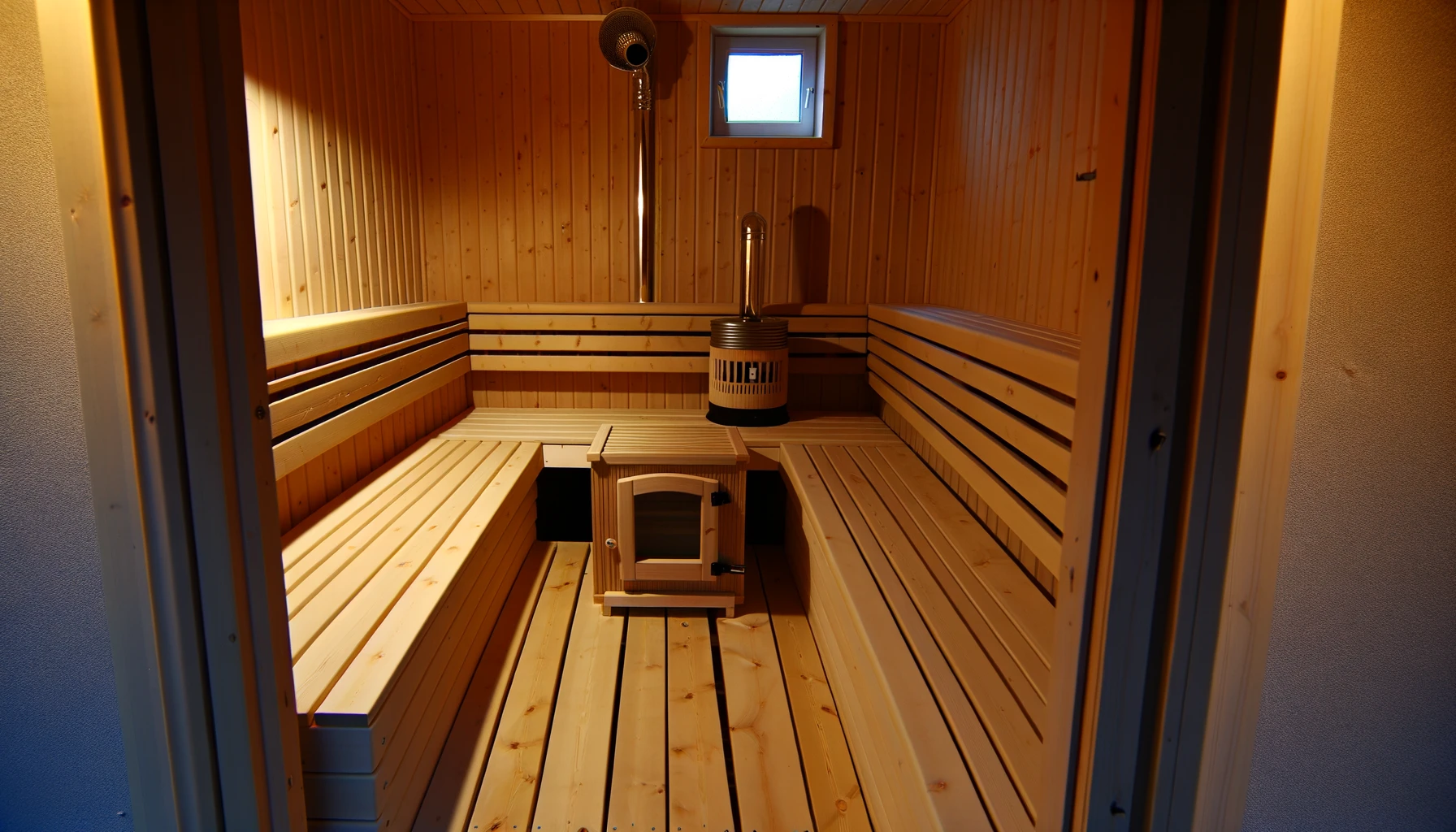Exploring the evolution of temperature control methods in electric and infrared technologies unveils fascinating insights into their historical significance. Understanding the temperature range capabilities and control mechanisms in these systems is crucial for optimizing efficiency and performance. Delving into the past reveals how advancements have shaped the way we manage temperatures today. By comparing electric and infrared technologies, we can grasp the nuances that influence their effectiveness in various applications. Join us on a journey through time as we unravel the intricacies of temperature regulation in electric versus infrared systems.
Key Takeaways
- Consider the Heating Needs: Understand your specific heating requirements before choosing between electric and infrared heating technologies.
- Energy Efficiency Matters: Evaluate the energy efficiency of both electric and infrared heating systems to make an informed decision based on your usage patterns.
- Prioritize Safety: Prioritize safety by considering the potential health implications, durability, and maintenance requirements of each heating technology.
- Design for Comfort: Take into account design aspects and noise considerations to ensure the heating system aligns with your aesthetic preferences and comfort levels.
- Regular Maintenance is Key: Maintain both electric and infrared heating systems regularly to ensure optimal performance and longevity.
- Seek Professional Advice: When in doubt, consult with heating experts or professionals to guide you in selecting the most suitable heating technology for your space.
Understanding Heating Technologies
Electric Heating Basics
Electric heaters work by converting electrical energy into heat through a resistive element. This element heats up when electricity passes through it, generating warmth. Convection electric heaters warm the air in a room by circulating it over a heating element, while radiant electric heaters emit heat directly to objects and people.
Air circulation plays a crucial role in heat distribution for convection heaters. Without proper circulation, warm air tends to rise and accumulate near the ceiling, leading to heat loss. To combat this, some electric heaters come with fans to ensure even distribution of warmth throughout the space.
Infrared Heating Explained
Infrared heaters operate by emitting radiant heat that warms objects and individuals in its path. Unlike convection heaters that heat the air, infrared heaters directly transfer heat to surfaces, creating a comfortable environment. These heaters create heating zones within a room where objects absorb the radiant heat.
Heating zones are achieved through the directional nature of infrared heat. By focusing on specific areas or objects, infrared heaters can efficiently warm targeted spaces without wasting energy on heating the entire room. This targeted approach enhances energy efficiency and reduces overall heating costs.
Efficiency of Temperature Control
Infrared heaters offer precise temperature control through thermostats that regulate heat output based on the desired setting. Thermostats monitor the temperature in the room and adjust the heater’s operation to maintain a consistent level of warmth. This level of control ensures comfort and prevents overheating or unnecessary energy consumption.
- Pros of Electric Heaters:
- Quick heating response
- Suitable for small spaces
- Cons of Electric Heaters:
- Higher electricity consumption
- Limited heating range
- Pros of Infrared Heaters:
- Efficient heating through radiant heat
- Targeted heating for specific areas
- Cons of Infrared Heaters:
- Initial cost may be higher
- Limited effectiveness in large, open spaces
Electric vs. Infrared Heating
Temperature Range
Electric heaters typically operate within a temperature range of 65-85 degrees Fahrenheit, suitable for maintaining a comfortable indoor environment. In contrast, infrared heaters can reach temperatures between 100-150 degrees Fahrenheit, offering more intense and direct heat. The significance of temperature control lies in regulating the warmth according to individual preferences and weather conditions.
Infrared heaters achieve optimal temperatures by emitting infrared radiation that directly heats objects and individuals in its path. This targeted heating method ensures efficient warmth distribution within specific zones, allowing for quick and effective heating. Unlike electric heaters that warm the air, infrared heaters provide instant heat without the need for preheating.
Control Mechanisms
Electric heaters come equipped with various control options, including thermostats, timers, and programmable settings. These features allow users to adjust the temperature based on specific requirements, ensuring personalized comfort levels. Precise temperature control is crucial for maintaining energy efficiency as it prevents unnecessary overheating or underheating.
Infrared heaters boast user-friendly controls and settings that simplify the heating process. With adjustable thermostats and remote controls, users can easily regulate the temperature to suit their needs. The precise control mechanisms not only enhance convenience but also contribute to energy savings by preventing excessive heat output.
Advantages of Electric Heating
Convection and Radiation
Electric heaters primarily rely on convection or radiant heat for warming spaces. Convection heaters warm the air through a heating element, but this can lead to heat loss as warm air rises and escapes. On the other hand, infrared heaters emit radiant heat that directly warms objects and individuals in its path.
In terms of heating methods, convection heaters operate by heating the air in a room, causing it to rise and circulate. This process results in a continuous cycle of warm air rising and cool air sinking, which can lead to inefficient heating as the warm air escapes through windows, doors, and other openings.
Conversely, infrared heaters work by emitting infrared radiation that heats objects and people directly without warming the air. This method of heating is more efficient as it does not result in heat loss due to air circulation, making it a preferred choice for maintaining consistent warmth in specific areas.
Energy Efficiency
When comparing the energy efficiency of electric heaters, infrared heaters stand out for their ability to provide zone heating, focusing warmth on specific areas rather than heating an entire room. This targeted approach helps optimize energy consumption by ensuring that only occupied spaces receive heat.
Infrared heaters are known for their ability to produce instantaneous heat, which translates to quicker warmth without the need to wait for the entire room to reach a comfortable temperature. This feature contributes to their energy efficiency by reducing overall heating time and minimizing energy wastage.
Efficient energy use plays a crucial role in reducing heating costs associated with electric heaters. By adopting energy-efficient practices such as utilizing zone heating with infrared technology and heater, homeowners can effectively manage their energy consumption and lower their monthly utility bills.
Benefits of Infrared Heating
Heat Coverage
Electric heaters typically provide heat coverage in a room by blowing hot air through the space, which can lead to uneven temperatures. In contrast, infrared heaters utilize radiant heat that warms objects and individuals directly, ensuring a more consistent and comfortable temperature across the room. This method of heating is known as zone heating, where specific areas are heated without wasting energy on unoccupied spaces. The even distribution of heat in different parts of a room with infrared heaters results in a cozy and efficient heating experience.
Health and Safety
When using electric heaters, it’s essential to consider health and safety aspects such as the risk of overheating or accidental fires due to their high surface temperatures. Infrared heaters offer advantages in terms of air quality and safety as they do not reduce humidity or oxygen levels in the room. These heaters do not circulate dust particles, making them ideal for individuals with allergies or respiratory issues. Proper ventilation and regular maintenance are crucial for ensuring safe and efficient heating with both electric and infrared heaters.
Comparing Energy Efficiency
Electric Heaters
Electric heaters come in various types, each with unique functionalities and efficiency levels. Fan heaters, while popular for their quick heat distribution, often result in energy losses due to the fan constantly running. This continuous operation can lead to higher electricity consumption over time. On the other hand, electric convection heaters offer a more balanced approach by heating the air, which then circulates throughout the room, providing consistent warmth.
When it comes to electric convection heaters, they excel in heating larger spaces efficiently. By warming the air and letting it circulate naturally, these heaters ensure even distribution of heat. However, one limitation is that they may take longer to reach the desired temperature compared to fan heaters. Despite this drawback, electric convection heaters are known for their energy efficiency and ability to maintain a comfortable environment without significant spikes in electricity usage.
Infrared Heaters
Infrared heaters stand out for their unique way of heating objects rather than the air itself. One of their key benefits lies in storing heat in objects such as walls, floors, and furniture. This stored heat is then gradually released back into the room, creating a lasting warmth that lingers even after the heater is turned off. This method of heating not only ensures consistent comfort but also reduces energy consumption by minimizing heat loss through ventilation systems.
Zone heating is another advantage offered by infrared heaters, allowing users to target specific areas for heating instead of warming an entire space unnecessarily. By focusing on occupied zones, infrared heaters optimize energy usage and reduce overall heating costs. Moreover, these heaters provide optimized control options, enabling users to adjust settings based on their preferences and schedule, further enhancing energy efficiency.
In terms of reducing air and dust circulation, infrared heaters shine by directly heating objects and people in their path without warming the air in between. This targeted approach not only prevents heat loss through drafts but also minimizes the spread of allergens and dust particles in the room. As a result, infrared heaters contribute to maintaining a cleaner and healthier indoor environment while operating efficiently.
Design and Noise Considerations
Stylish Designs
Electric heaters boast sleek and modern designs that enhance the aesthetics of any room. The slim profiles and versatile finishes of electric heaters make them perfect for contemporary interiors. These designs can effortlessly blend with various room decors, adding a touch of elegance to the space.
Moreover, the stylish designs of electric heaters not only serve as heating appliances but also as decorative elements in the room. They come in a variety of shapes, sizes, and colors, catering to different style preferences. Whether it’s a minimalist living room or a cozy bedroom, electric heaters can be integrated seamlessly into the decor while providing efficient heating solutions.
Functionality meets design in electric heaters, offering both practicality and visual appeal. The combination of stylish designs with advanced heating technologies ensures that users not only stay warm but also elevate the overall look of their living spaces.
Noise Levels
When it comes to noise levels, infrared heaters stand out for their whisper-quiet operation. Unlike fan heaters that produce noticeable noise when in use, infrared heaters operate silently, creating a peaceful environment for users. This quiet operation is especially beneficial in bedrooms, offices, or areas where minimal disturbance is desired.
Comparing the noise levels between electric and infrared heaters reveals a significant difference in user experience. While electric heaters may emit some noise during operation, infrared heaters maintain a noise-free ambiance, allowing users to enjoy warmth without any distractions. The absence of noise enhances user comfort and ensures a pleasant heating experience.
The impact of noise levels on user comfort cannot be overlooked when choosing between electric and infrared heaters. The quiet operation of infrared heaters not only promotes relaxation but also contributes to a more serene atmosphere in the room. By prioritizing low noise levels, users can create a tranquil environment while benefiting from efficient heating solutions.
Durability and Maintenance
Lifespan of Heaters
Electric heaters have a typical lifespan of 5 to 10 years, depending on usage patterns and maintenance. Factors like overheating due to dust accumulation can shorten their lifespan. In contrast, infrared heaters are known for their longevity, often lasting up to 20 years.
Regular maintenance plays a crucial role in extending the lifespan of heaters. Electric heaters require periodic checks on wiring and components, while infrared heaters generally have fewer components prone to wear and tear.
Maintenance Needs
Electric heaters necessitate regular maintenance, including cleaning filters and ensuring proper ventilation to prevent overheating. Infrared heaters, on the other hand, have minimal maintenance needs due to their simple design.
For optimal performance, regular cleaning and inspection are essential for both types of heaters. Electric heaters benefit from annual professional inspections, while infrared heaters mainly require dust removal from the heating elements.
Safety and Health Implications
Sunburn Risk
Electric heaters, especially those with exposed heating elements, can pose a sunburn risk due to their high temperatures. These heaters can emit intense heat, potentially causing skin damage similar to sunburns. In contrast, infrared heaters emit safe levels of radiation that do not harm the skin even with prolonged exposure. It is crucial to be aware of this risk and take necessary precautions when using electric heaters.
- Sunburn risk with electric heaters
- Safe radiation levels from infrared heaters
- Importance of following safety guidelines
Infrared heaters are designed to operate at lower surface temperatures compared to traditional electric heaters, reducing the risk of accidental burns. When using electric heaters, it is essential to maintain a safe distance between the heater and any flammable materials to prevent accidents. Following manufacturer instructions on proper usage and ventilation can help mitigate safety risks associated with these heaters.
- Tips for safe heating practices with electric heaters
- Safety features of infrared heaters
- Importance of choosing safe heating solutions
Safe Heating Solutions
Electric heaters come with certain safety risks, such as overheating and fire hazards if not used correctly. On the other hand, infrared heaters offer safer heating solutions with features like low surface temperatures that reduce the risk of burns. Opting for infrared heaters can provide a safer heating alternative for both residential and commercial spaces.
- Risk of overheating and fire hazards with electric heaters
- Safety benefits of infrared heaters
When selecting a heating solution for your space, consider the safety features offered by infrared heaters, such as tip-over protection and cool-to-touch exteriors. These features can enhance safety and prevent accidents in households or work environments. By prioritizing safety in heating choices, you can create a secure and comfortable environment for occupants.
- Tip-over protection and cool-to-touch exteriors
- Enhanced safety features in infrared heaters
Closing Thoughts
After delving into the intricacies of electric and infrared heating systems, you now possess a comprehensive understanding of their differences, advantages, and implications. When deciding between the two, consider factors like energy efficiency, maintenance requirements, and safety concerns to make an informed choice that aligns with your specific needs. Remember to prioritize not just immediate costs but long-term benefits for a sustainable and efficient heating solution tailored to your space.
In your quest for the ideal heating system, weigh the pros and cons outlined here against your unique circumstances. Whether you opt for electric or infrared heating, make a decision that ensures comfort, efficiency, and safety in your living or working environment. Your choice today will impact your tomorrow. Stay informed, stay warm.
Frequently Asked Questions
What are the key differences between electric and infrared heating technologies?
Electric heating relies on electrical resistance to generate heat, while infrared heating uses electromagnetic radiation. Electric heating warms the air directly, while infrared heating heats objects and people in its path, providing more targeted warmth.
Which type of heating technology is more energy-efficient: electric or infrared?
Infrared heating is generally more energy-efficient than electric heating because it heats objects directly, leading to quicker and more focused warmth. This efficiency can result in cost savings over time due to reduced energy consumption.
Are there any health benefits associated with using infrared heating systems?
Yes, infrared heating can provide health benefits such as improved blood circulation, reduced muscle stiffness, and relief from certain respiratory conditions. The gentle, radiant heat emitted by infrared systems can promote overall well-being and comfort.
How do design considerations differ between electric and infrared heating systems?
Electric heating systems often require more space for installation due to the nature of convection heating. In contrast, infrared heaters can be mounted on walls or ceilings, offering a more streamlined and versatile design option for various spaces.
What safety measures should be considered when using electric or infrared heating systems?
Both electric and infrared heating systems require proper installation by qualified professionals to ensure safety. Regular maintenance checks, keeping flammable materials away from heaters, and following manufacturer guidelines are crucial for safe operation.






